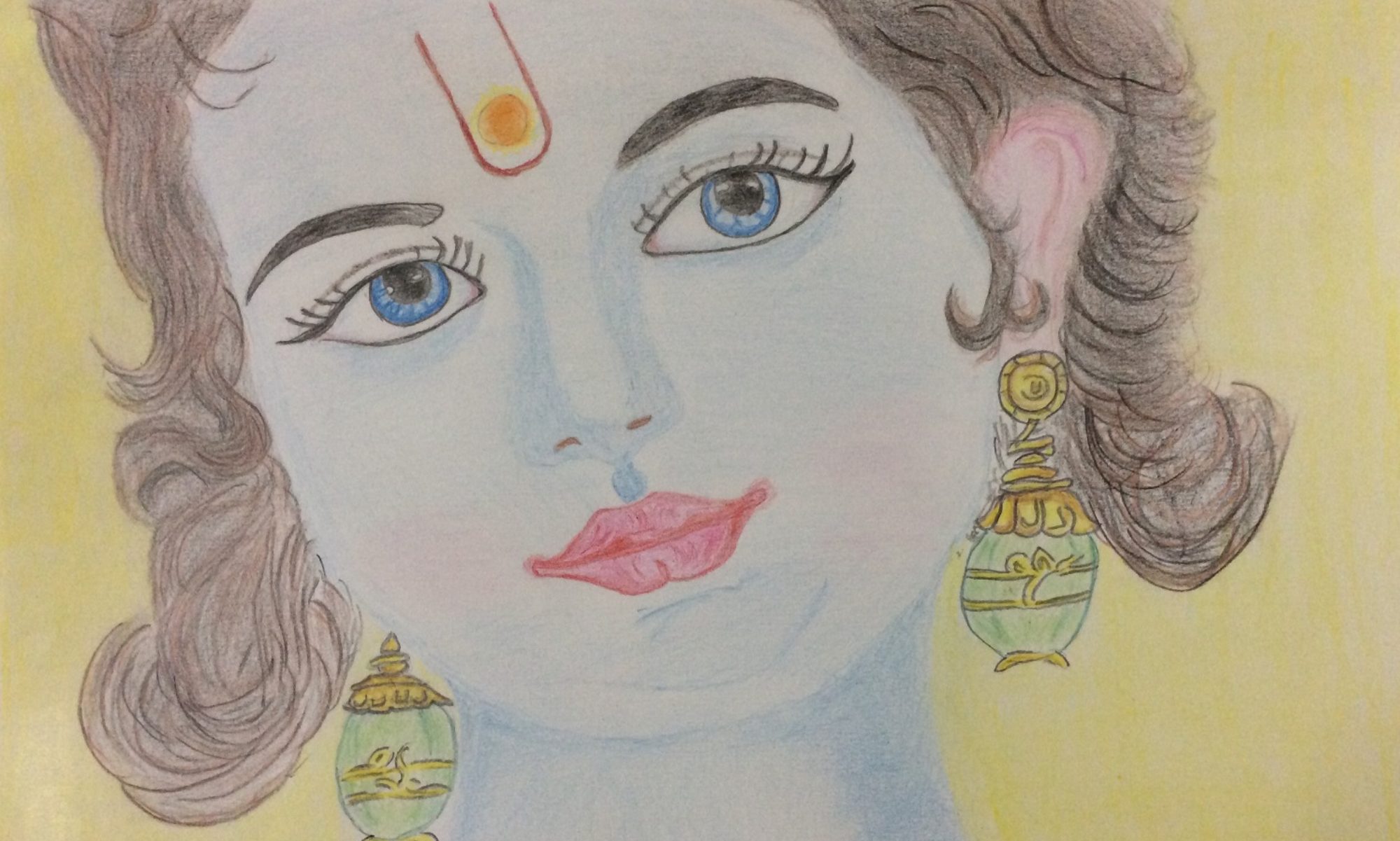Of the Trinity, Brahma is the only one who is considered to be mortal and has a fixed lifespan, whereas both Shiva and Vishnu are considered to be immortal. Brahma’s lifetime is measured in the Cosmic time scale (Read the article on Cosmic Time) and is fixed at 100 cosmic years. The current Brahma has completed about half of his lifespan.
In the Vedic rituals, it is customary, to initiate the ritual with a “Sankalpam”. The Sankalpam is a formal initiation of the ritual where the performer makes clear the intent to recite a particular Mantra or rites. The actual ritual follows the Sankalpam. The Sankalpa mantra begins with stating the ‘Time’ and ‘Location’ from where it is being performed followed by the details of the Mantra. The time is very elaborately stated in great details. It starts with the Cosmic time, beginning from the Age of the current Brahma and His creation, the present Universe, and finally narrows down to the current Human calendar. It is thus here that we get an exact idea of the Age of the current Brahma and with it the Age of the current Universe.
The Sankalpa Mantra for any ritual usually follows a standard format and an excerpt of the Time portion of the Sankalpa Mantra is as under:
Mamo partha samastha duritha kshya dwara sri paameshwara preethyartham…….
…… Aadhya brhmanah , dweethiye parardhe, shweta varaha kalpe, , Vaivaswatha manvanthare, ashta vimshathi thame, kali yuge, prathame padhe, Shakabde Asmin vartamane , vyaavaharike prabhavaadheenam sashtyah samvatsaranaam madhye , Vikari nama samvatsare, Dakshinaayane, Grishma rithou, Kataka mase, shukla pakshe, pournamasyam shubha thithou, Guru vasara yukthayam, Shravana nakshatra yukthayam
The translation of the excerpt is here:
| Mantra | Translation |
|---|---|
| Aadhya Brhmanah | The Current Brahma |
| Dweethiye Parardhe | The word “Dweethiya” stands for second & “Aardhe” means Half; thus we are in the 2nd half of the Brahma’s lifespan. In other words, 50 Cosmic years of the current Brahma have passed and we are in the 51st cosmic year. |
| Shweta Varaha Kalpe | A Kalpa is a Day in the life of Brahma (See the article on Cosmic Time). Kalpas are named and are 30 in number and repeats itself cyclically. One Kalpa is equal to 4294 Million Human Years. We are in the Shweta-Varaha Kalpa at present |
| Vaivaswatha Manvanthare | 14 Manvataras constitute one Kalpa. These 14 Manvantaras are named and repeat cyclically. Six Manvantaras have already passed by and we are presently in the “Vaivaswatha” Manvantara which is the 7th in the list of 14 Manvantaras |
| Ashta Vimshathi Thame, Kali Yuge, Prathame Padhe, | Within the 7th Manvantara, 27 ChaturYugas have passed by. “Ashta-Vimshati” means 28 and thus we are presently in the 28th ChaturYuga Within the 28th ChaturYuga, Satya, Dvapara and Treta Yugas are completed and we are in the “Kali Yuga” Prathame means ‘First’ Paadhe means ‘Part’ This means we are in the first part of the Kali Yuga within the cycle of the 28th Chaturyuga |
| Prabhavaadheenam Sashtyah Samvatsaranaam Madhye Sarvari Nama Samvatsare | With this portion we now move from measuring Cosmic Time to getting into the details of Human Years. A Samvatsara means a revolution of the Earth around the Sun and thus stands for 1 Human Year (365 days). Unlike in the Gregorian calendar where Years are stated in numbers and keep progressing, In Hindu time metrics, the Years or Samvatsaras are numbered and named from 1 to 60 and these repeat itself cyclically. The first Samvatsara in this cycle is named as “Prabhava”. Hence: Prabhava + Aadheenam – Means starting from Prabhava.. ..Sashtyah Samvatsaranaam Madhye – Among the 60 (Shashti) Samvatsaras Sarvari Nama Samvatsare – We are in the Samvatsara named “Sarvari”, as in April 2020 (the 34th in the list of 60 Samvatsaras) |
| Dakshinaayane, Grishma Rithou | The Mantra then moves into specifying the Ayana, ie. Uttarayana or Dakshinayana which is the north / south movement of the Sun within the year The Ruthu is then mentioned, and it stands for the current season. In the Hindu calendar, each year has 6 seasons |
| Kataka Mase, Shukla Pakshe | Among the 12 months (Maase), the current month is specified along with the Paksha or the Fortnight depending on the waxing or the waning phases of the Moon |
| Pournamasyam Shubha Thithou, Guru Vasara Yukthayam, Shravana Nakshatra Yukthayam | The Rest of the Sankalpa deals with exact current tithi or date, weekday & other metrics as per the Hindu Panchanga (the 5 parts specifying the current time). These are Thithi, Vaara (recited as Vasara), Nakshatra, Yoga and Karana |
| The time portion of the Sankalpa ends here |
The Sankalpa thus helps in correctly tracking the time and the age of the universe that has passed so far and gives us an exact understanding of where we presently stand in terms of Time. Thus we are in the 51st year of the Brahma, in the first Kalpa, and within this Kalpa we are in the 7th Manvantara, in the first half of the Kaliyuga of the 28th Chaturyuga. The current Brahma has thus half of his lifespan remaining before He will perish.
It is widely accepted and believed that after the death of the current Brahma (Chaturanana – the four faced one), Lord Hanuman will be the next Brahma and the cycle of creation will begin afresh again with him.

